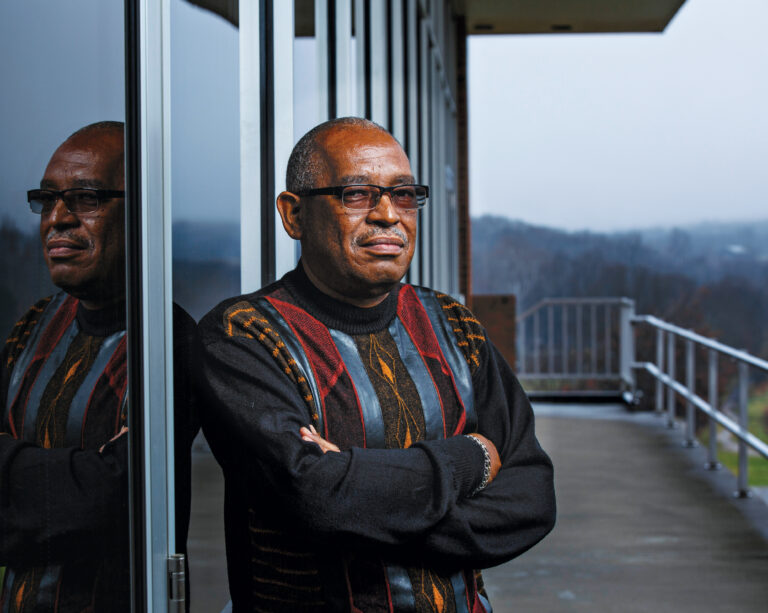Program Chair of African and
African American Studies
How do you think Berea’s commitment to interracial education works to serve the Appalachian community or region?
A major way is through the development of the African and African American studies program which was founded in the 1970s primarily to focus upon community service. African American studies, what we would have called black studies then, was not supposed to be education to just sit in the ivory tower and have these great intellectual conversations, but the focus was on being involved in the community and so this discipline grew out of the community. And so community service has always been a part of what we do in African and African American studies.
I’ve always told my students, “You shouldn’t just get an education for an educations’ sake. You should use your education to make your world better. The value should be that you are doing it to make the world that you live in better!” That is the value. The value should come from something that is inside of you, that you know that you make things better. The value shouldn’t come because oh I can make more money and so forth, the value has to be something here. That you can do something that will help someone else have a better life. To me it is something intrinsic, it is your soul, it is your spirit.
How does Berea College seek to encourage diversity and the “bridging of gaps” between individuals of different racial, cultural or ethnic backgrounds?
I think the best examples would be the African Americans and Caucasians who have gotten a Berea degree and have gotten involved in the community. I am not just thinking of those who have gone on to create great programs, which is nice. But most of it comes down to how do we live on a day to day basis? Do you treat the people you work with respect? Do they treat you with respect? So, I am focused on the person who graduates, leaves Berea College, and can communicate with people who are different than them because of friendships that are made in Berea. Look on Facebook and you will see that people are communicating, black and white and whatever it is. That is what I think we are trying to produce. Yes, it is nice to have superstars but for a team to work you need that average, everyday player who is willing to sacrifice for the good of the team. So that is where I put my focus. Not on the superstars but on the average everyday graduate of Berea College who represents this institution with class and dignity, who gets involved with organizations, comes back to homecoming and sees someone who is different than them, communicates with someone who is different than them.
You look at our student body, look at the programs and you will see a mixture of black and white. Look at the Black Music Ensemble, which sings black music or gospel music, and I say to you the ensemble is probably the most racially diverse organization on this campus. If you see the ensemble, look at the number of white students and at the number of international students who participate. I think this is remarkable because white students are not often in a position where they are in the minority. But, in the ensemble, the white students know they are going to be in the minority and they do it well, and many students of these students speak about the positive influence of the ensemble.


